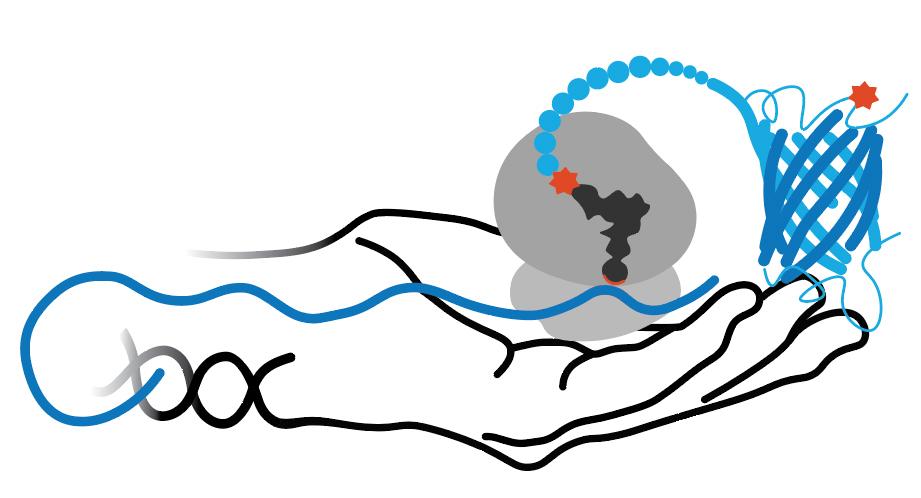RS/tRNA Foundational Publication Support
Avila-Crump, Savanna, Marcus L Hemshorn, Chloe M Jones, Lea Mbengi, Kyle Meyer, Joshua A Griffis, Subhashis Jana, et al. (2022) 2022. “Generating Efficient Pyrrolysyl-Trna Synthetases For Structurally Diverse Non-Canonical Amino Acids.”. Acs Chemical Biology 17 (12): 3458-3469. doi:10.1021/acschembio.2c00639.
Gottfried-Lee, Ilana, John J Perona, Andrew Karplus, Ryan A Mehl, and Richard B Cooley. (2022) 2022. “Structures Of Pyrrolysine Trna-Synthetases Support The Need For De Novo Selections When Altering The Substrate Specificity.”. Acs Chemical Biology 17 (12): 3470-3477. doi:10.1021/acschembio.2c00640.
RS/tRNA Pair Development Year
2022
ncAA(s) Incorporated
acridonylalanine
ncAA Structure (png, jpg, jpeg)

ncAA Utility
It is a blue-wavelength fluorescent probe used for monitoring conformational changes and other molecular dynamics in proteins. The 2013 and 2021 foundational publications provide information on its properties, and a 2023 paper (doi: 10.1002/pro.4633) provides examples of its use in FRET studies.
RS Organism of Origin
Parent RS
RS Mutations
N166A
V168G
W239C
V168G
W239C
tRNA Organism of Origin
Parent tRNA
tRNA Anticodon
N/A
RS/tRNA Availability
Plasmid maps and sequences available in supplemental information in referenced paper.
Addgene 174099 in pDule
Addgene 174100 in pDule2
Addgene 174101 in pAcBac for mammalian expressions
Addgene 174099 in pDule
Addgene 174100 in pDule2
Addgene 174101 in pAcBac for mammalian expressions
RS/tRNA Additional Notes
For tests in calmodulin was ~3x more efficient than Acd-RS82 in E. coli, and more efficient at lower Acd concentrations. Tests in mammalian cells at 3 sites gave 6 to 74% efficiency and full fidelity by MS analysis and no misincorportation of Npf. For sfGFP150 expression in mammalian cells, was better than Acd-RS82 at 0.10 and 0.25 mM, worse at 0.300 mM and similar in between. ; UP50 is about 0.180 mM.
Mammalian expressions were done in cell line with eRF1 E55D plasmid
Mammalian expressions were done in cell line with eRF1 E55D plasmid
